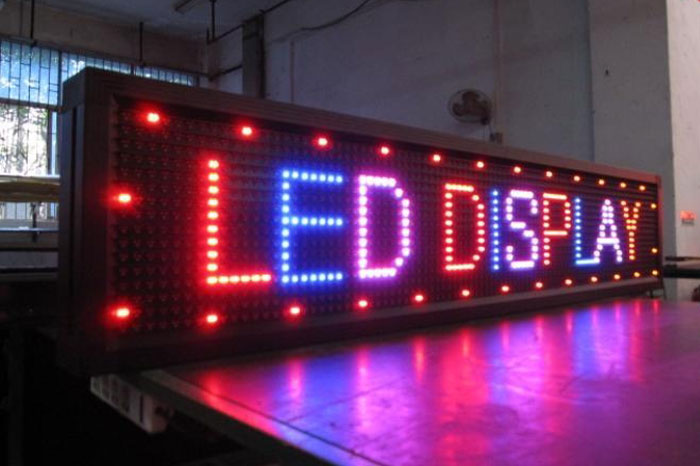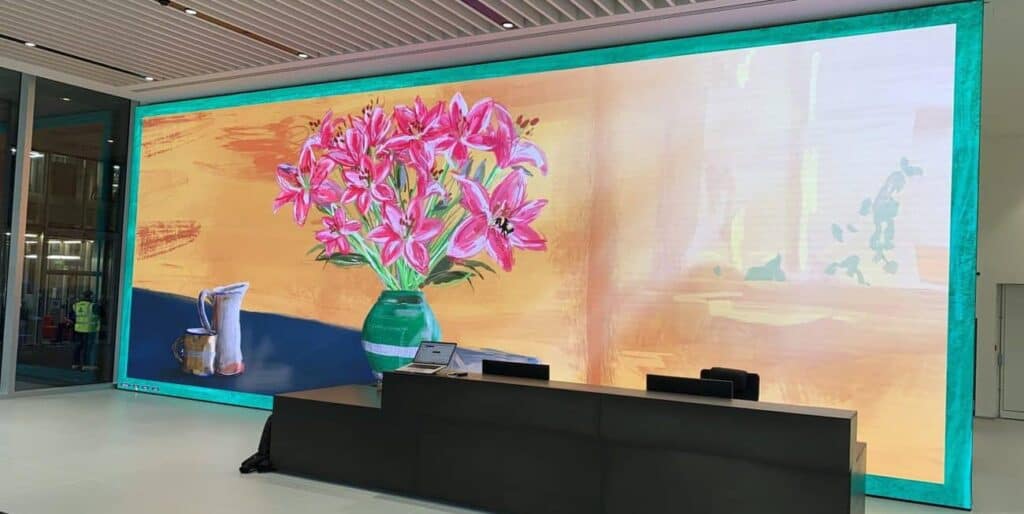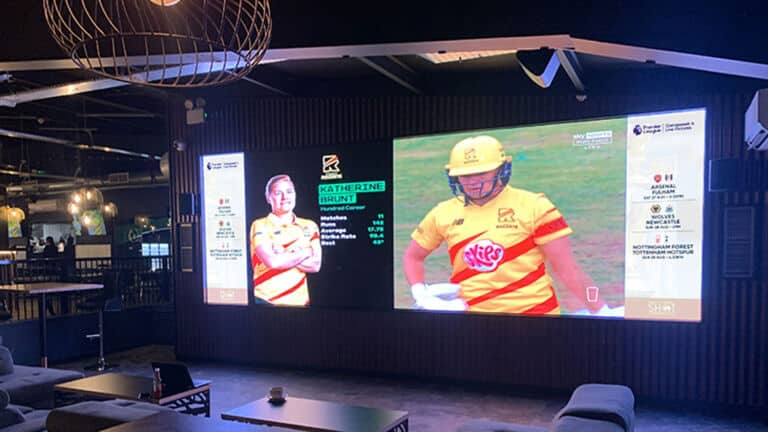When it comes to researching LED displays, resolution and pixel size are crucial. Both of these factors directly affect the clarity, detail and overall visual experience provided by the display. These two components have a bearing on the overall experience:
1. Image Quality
Pixel Pitch is the distance that extends from the central LED pixel to the next. A lower pixel pitch indicates that the LEDs are more together, resulting in a greater pixel density and higher resolution. This translates directly into sharper pictures, with more detail, especially important for content with fine details or text.
Resolution: This is the number total of pixels shown, generally measured in hight x width (e.g. 1080 x 1920). Higher resolutions permit the display to show greater detail. They also provide an immersive experience.
2. Viewing Distance
The optimal viewing distance is tightly tied to the pixel pitch. A smaller size of pixel (and consequently a greater resolution) is essential for displays that are intended to be seen from a close distance. This includes indoor screens, those employed in retail or exhibitions. If the display is seen at a distance sufficient it will not matter whether there are more pixels.
3. Content Versatility
Displays featuring smaller pixel pitches and higher resolution, as well as a smaller screen size can accommodate a variety of different types of content. They can accommodate high-definition images and text as and complex graphic designs. This flexibility can be vital in applications like broadcast studios, digital signage as well as control rooms.
4. Cost Implications
Yes, having a smaller size of pixels can produce better images however, the cost to produce the display will rise significantly. The cost of creating screens that have higher resolutions is more due to the larger number LEDs required. In order to achieve the best balance between budget and high resolution, you should consider your requirements as well as your distance of the screen to be viewed.
5. Application Specificity
The significance of the pixel pitch or resolution can differ based on the project.
Indoor displays require a smaller pixels (e.g. between 1.2mm all the way to 2.5mm), to ensure excellent quality even at close-up distances.
Outdoor displays: They could feature a higher pixel pitch (e.g. 4mm - 10mm) due to the fact that they can be seen from larger distances. High resolution is not as crucial.
6. The Longevity & Upgradability
As technology for display advancements and technology improves, the pixel pitch has decreased, allowing for larger resolutions in smaller spaces. Investing in a display with the highest pixel pitch can ensure that it remains relevant and effective over a longer period of time, reducing the need for frequent updates.
Conclusion:
Pixel pitch, resolution and viewing experience are all important factors in the performance of LED displays, specifically in relation to the quality of images and the variety of content. To select the best LED display that fits your needs, budget, and target viewers, it is important to take into account all these aspects. Check out the most popular 3d led display for site recommendations including led video wall panels, flexible led display, wall tv led, rental led display screen, led on screen, video wall church, led screen panels, tv the wall, display led outdoor, led rental screen and more.

What Is The Importance Of Weight And Portability When Researching Led Displays?
The consideration of weight and portability is essential when selecting LED display options. This is especially true in situations where flexibility, easy installation and transportability are the most important considerations. Here's why these aspects matter:
1. Ease in Installation and Setup
Weight: Lighter displays are easier for installers to work with, particularly in environments in which LED displays have to be placed on walls, ceilings or other structures. Displays that are heavy require more sturdy support structures, which could hinder installation and add expenses.
Portable displays make it easy to installation and removal. This makes them ideal for tradeshows, temporary installations and other events. They are lightweight and easy to transport, reducing the amount of time needed to setup and work.
2. Staging and Staging
Lightweight and portable LED panels are essential in the rental market and for staging events, where displays must be frequently transported. They allow for quicker turnaround time between events, decrease transportation costs, and minimize the chance of damage resulting from handling.
Modularity - LED portable displays tend to be modular in their design, making them easy to put together and take down. This flexibility allows for the creation of custom configurations for display that can be tailored to different event requirements.
3. Structural Requirements
Support Structures. Heavier LED displays need greater strength and complex mount structures. This could add cost and complexity of installation. Lighter displays, on the other hand, can be supported by simpler and less costly structures. Therefore, they are more adaptable to different environments.
Venue Constraints Some venues will have weight limitations for the structure. This could be the case with ceiling or walls mounts. Selecting a display that is lightweight will ensure that the installation will be carried out without breaking the limitations.
4. Transport and Logistics
Shipping costs: Weight of LED displays has a direct impact on the cost of shipping and handling. The smaller the display, the cheaper shipping costs are. This is particularly true for large deployments or international transportation.
Storage and Handling Lightweight and portable display units are easier to keep in storage. They also require less space, and management of logistics is simplified, which is crucial for companies that have to move displays from one place to another.
5. Flexible use
Reconfigurability Lightweight and portable displays are typically made from modular components, which allow the reconfiguration of various sizes and shapes to suit various purposes. This is very useful for creative installation where it is vital to be flexible in design.
The Displays are Versatile They can be used anyplace, whether it's a small pop-up event or a huge outdoor event. Their versatility is greater than that of heavier, cumbersome displays.
6. Safety Factors
Reduced Risk: Displays that are less heavy pose lesser risk when it comes to handling and installing them, which reduces the chance of an accident or damage to the display. This is especially important for environments that require the display to be adjusted or moved often.
Compliance Regulations on safety, particularly in public spaces, could set weight limits on installations. For compliance reasons, it's essential to make sure that the display is in compliance with the regulations.
7. Energy Efficiency
It is not always directly related with power consumption, but lightweight displays are made to be energy efficient. Displays with LEDs that are portable may consume less power. This is an advantage in environments where electricity is scarce or where the reduction of operational expenses is essential.
Conclusion:
LED displays must be lightweight and portable. This is crucial particularly in situations in which they are often moved, such as temporary locations or in areas with weak structural support. These elements can affect cost as well as flexibility and safety too. When looking into LED displays, it is essential to think about the weight and ability to move the display when there are any demands for frequent movement, rapid installation, or compliance with structural or safety specifications. Read the best led rental screen for blog advice including tv led wall, display device, led screen for outdoor, led screen, outdoor digital screens, led video wall panels, advertising displays, screen led display, outdoor led panel, led board rental and more.

How Important Is Color Accuracy And Calibrating When It Comes To Led Displays?
Particularly, accuracy of color and calibration is crucial for LED displays that need to be utilized in applications that demand visual quality. Here are a few reasons why these factors matter.
1. Realistic Realism and Visual Quality
Color Accuracy refers the accuracy of LED displays in reproducing the colors requested by the content creators. High-quality color accuracy ensures that videos and images appear real, vibrant and vivid. They also appear without distortions.
Importance: For applications like broadcasting, advertising, retail, and professional presentations, accurate color reproduction is essential to keeping the impact of the content as well as effectively communicating the intended message.
2. Brand Integrity
Consistency of Branding Consistency of branding is essential for businesses that depend on certain color schemes to convey their brand. If the colors don't match they could damage the brand's image.
Application: Brand colors must be maintained accurately in all display areas in retail stores and corporate offices.
3. Audience Engagement and Impact
Enhanced Viewer Experience: Displays with outstanding color accuracy will provide an even more engaging and immersive experience for viewers. Accurate colors can help communicate emotions and messages better, improving the overall impact of an exhibit.
Applications: In settings such as museums, entertainment venues or any place where the aim is to provoke emotional responses the accuracy of color can guarantee that your audience receives the ideal experience.
4. Content Creator Intent
True Representation Design, artists and content creators typically spend a lot of time and effort creating images that are based on specific colors. The work will be presented exactly how it was designed with an LED display that replicates exact colors.
Application: When working in film, digital art photography, or any other field where color is a critical component of narrative and aesthetic appeal, maintaining color accuracy will ensure that the creator's vision is respected.
5. Calibration to Consistency
Unevenness of Panels: The calibration ensures that the LED panels of a display have consistent in brightness and color, preventing any discords. This is crucial for large-scale display made of multiple panels.
Even the top displays can lose color accuracy over time. To ensure that the display meets the highest standards of quality and is consistently performing regularly, periodic calibration of the display is required.
Application for video walls and large outdoor displays or any other multi-panel setup the importance of calibration is achieving a seamless and uniform appearance, which is critical for high-profile, professional installations.
6. Impact on content types
Different content requirements various types of content have different requirements regarding accuracy in color. For example, medical imaging displays require extreme accuracy to guarantee the correct diagnosis, while an advertising display may prioritize high-quality and vividness.
Application: In fields such as retail and high-end design, medical imaging or medical imaging, the capability to use precisely calibrated color settings is essential to ensure the display meets the demands of the information it displays.
7. Technology and Specifications
Bit Depth and Color Gamut Displays with a high degree of bit depth and wide color gamuts (such as DCI-P3 and Rec. 2020) have greater color accuracy and produce a wider spectrum of colors. It is important to know these specs in selecting a monitor to be used for applications where color accuracy is of paramount importance.
Advanced Calibration tools: Many LED displays today have sophisticated calibration tools that include software. This allows for precise adjustments and guarantees that the display will remain accurate throughout the years.
Application: If you work in a field where color accuracy, calibration, or accuracy are important, such industries as film, graphic design and advertising that is high-end, it is advisable to invest in displays capable of superior color accuracy, calibration, or accuracy, is vital.
Conclusion:
It is essential to ensure that the LED display is calibrated and feature accurate color reproduction in order to create high-quality images that reflect the creator's intent and meet the branding guidelines. If the display is used in advertising, entertainment or professional presentations as well as specialized fields such medical imaging, then precise color reproduction can help achieve the desired impact while maintaining the integrity of the visual. If your needs require precise quality of color reproduction and constant performance, then accuracy of color and calibration must be a top priority when researching LED displays. Have a look at the most popular flexible led panels for more info including outdoor digital display, board led, led screen transparent, led display transparent, display light led, transparent led display screen, led video wall, advertising tvs, led panels, display led outdoor and more.
